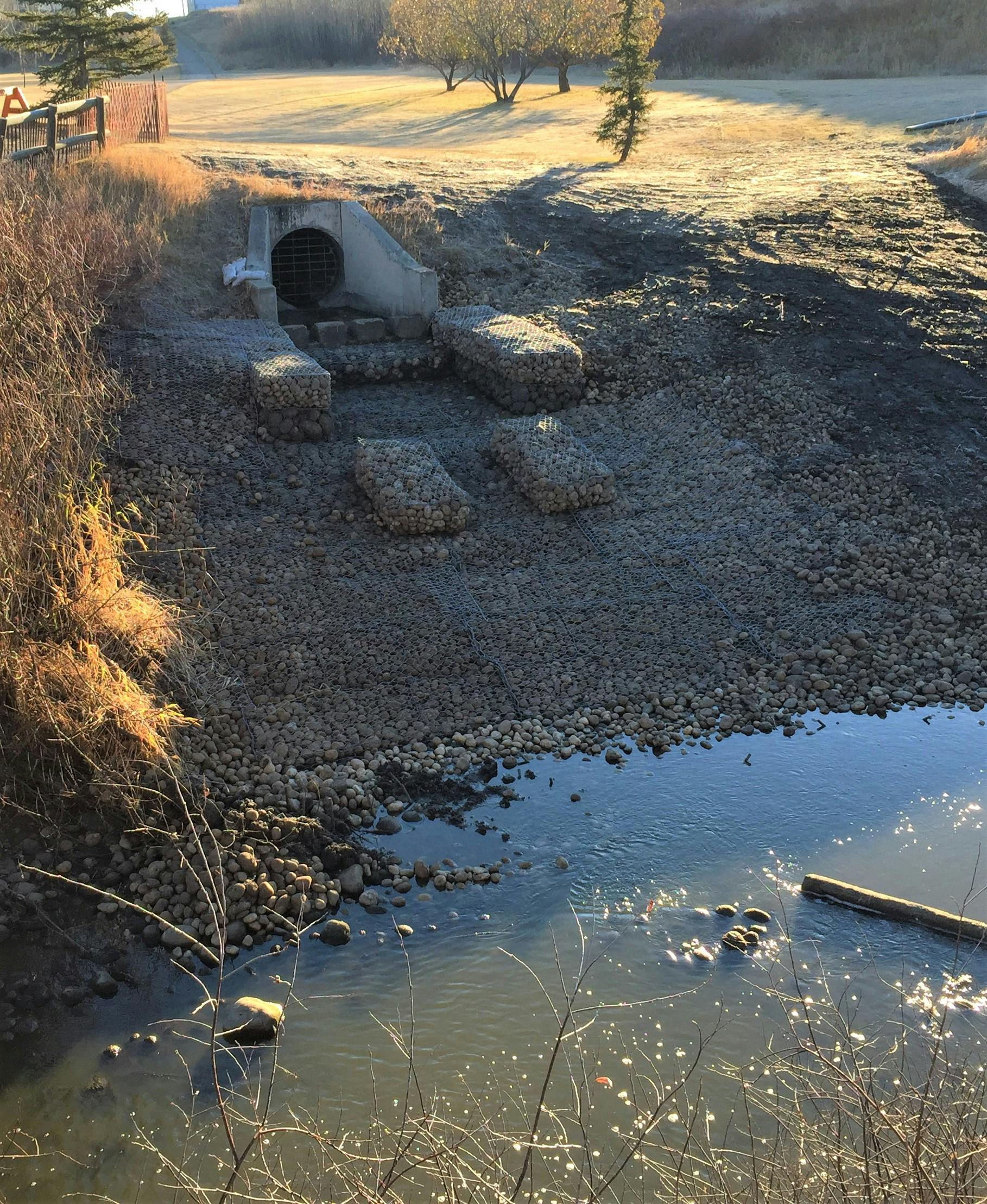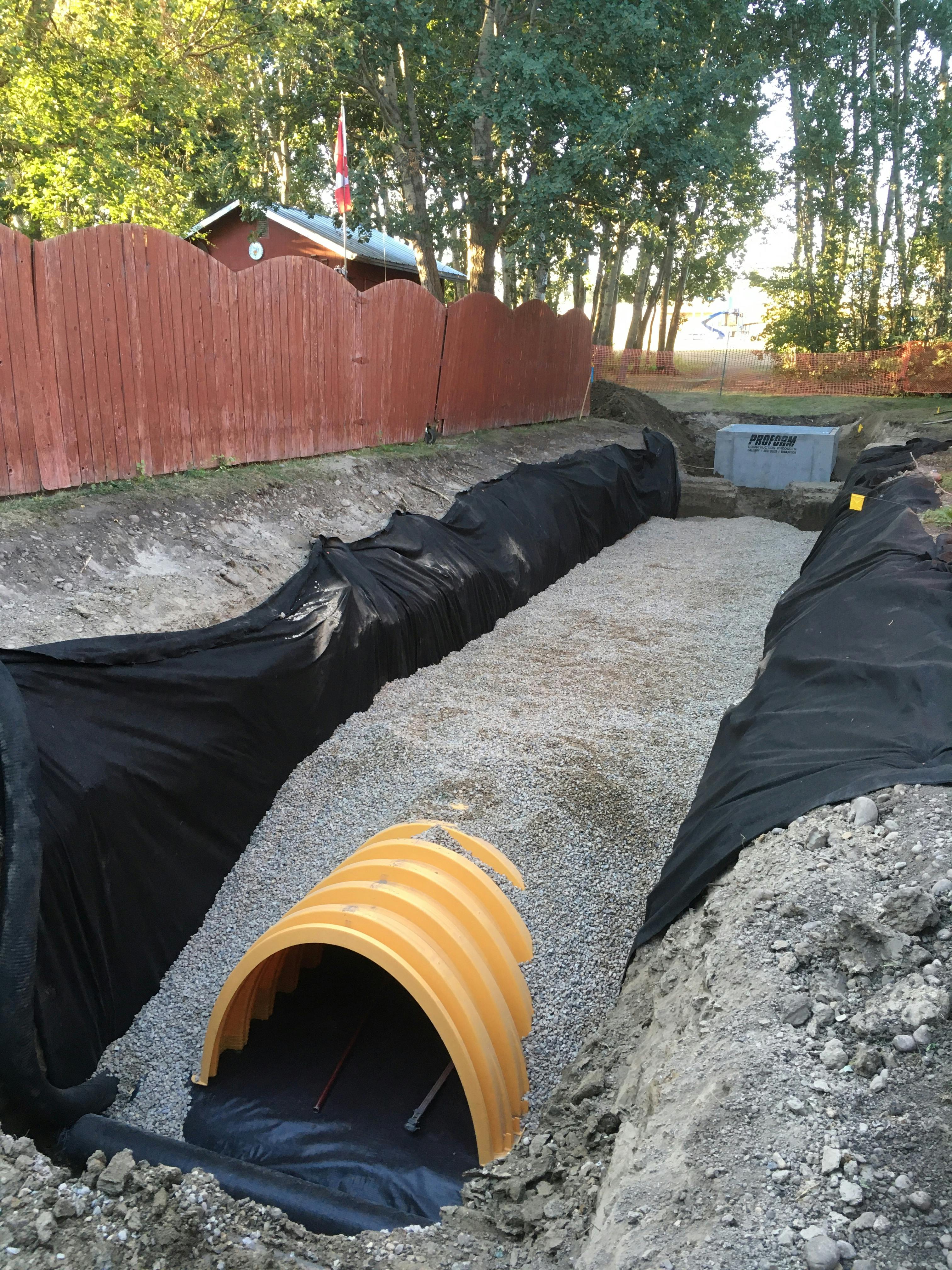Did You Know? All About the Stormwater System
Consultation has concluded

What is stormwater?
Stormwater is rain, snow melt, and other precipitation that collects on the ground surface. It runs off roofs, streets and other land surfaces and gets absorbed by plants or soils. Surfaces that restrict the natural infiltration or flow of water into the ground (known as impervious areas) such as roads, buildings and parking lots increases the amount of stormwater that forms as runoff.
The stormwater system is important to make sure runoff travels away from homes and buildings. This protects private and public properties from flooding during rainfall, spring melt, and other precipitation events.
How is stormwater maintained?
The City of Grande Prairie maintains a stormwater system that helps direct runoff water underground and above ground through various types of infrastructure and drains untreated into the Bear Creek and other natural water bodies. The system consists of:
- Catch basins
- Manholes
- Roadways
- Swales
- Pipes
- Underground stormwater chambers
- Ponds
A big part of the above ground stormwater system is roadways. The City designs roads so that water flows towards catch basins and enters the underground stormwater system. To prevent overwhelming the system, underground infrastructure is designed to allow manageable amounts of water in at one time. This may result in some ponding during storms, but the water will eventually make its way down into the catch basin and to the Bear Creek.
How is stormwater managed?
Stormwater is managed through bylaws, planning and maintenance and best management practices. Bylaws include:
- Lot Grading: ensures water drains away from homes and buildings
- Drainage: prohibits materials from being released into the storm system
- Animal Control: requires owners to dispose of animal waste in a sanitary manner
Planning and maintenance includes:
- Standards, guidelines and design criteria for new development
- Identification of required upgrades to the stormwater system
- Street sweeping, catch basin cleaning and cleaning debris from inlets
Best management practices includes:
- Spreading it with stormwater reuse, rain gardens, downspouts/sump hoses directed to permeable surfaces
- Storing it with rain barrels and green roofs
- Sinking it with permeable pavers and surfaces and by limiting the amount of hardscaping (concrete patios and driveways)
What happens to stormwater that doesn't get absorbed?
happens to stormwater that doesn't get absorbed?
Excess runoff that doesn't soak into the ground picks up pollutants such as pet waste, salt, pesticides, fertilizer, leaves, litter, oil and grease. These pollutants flow into the City's open waterways, ditches, gutters, underground sewers, outfalls and other stormwater structures and negatively affects the health of our streams, rivers, wildlife and fish. Excess runoff can also cause higher and faster water flow during storms, which may result in flooding and property damage.
Grande Prairie has over 64,000 people, and new growth and development has covered much of the prairie landscape with impervious area. As new development and re-development of existing areas continues, the amount of impervious area increases, meaning more excess runoff. This adds to the pollutants and higher flows during storm events, requiring upgrades be made to the stormwater system to ensure continued management.
Everything outside your home drains untreated into the Bear Creek and other natural water bodies, which is why we all have a shared responsibility to ensure water draining into the system is clean. Learn more about what is permitted in the drainage system by reviewing the drainage bylaw.

How can residents help?
- Cleaning up litter
- Using biodegradable fertilizers that contain no harmful chemicals
- Using a slow-release natural fertilizer for your lawn
- Allowing plants and trees to grow in their natural and original habitats, such as those found near creeks and streams
- Disposing toxic products at hazardous waste centres
- Capturing stormwater through rain barrels or rain gardens
Did you know?
The Mountview residential neighbourhood had previously been subject to flooding during heavy rainfalls, due to an outdated storm system. In 2020, the City began upgrading the neighbourhood’s storm system to meet todays current standards, which included the installation of:
- 32 new storm structures
- Almost half a kilometre of new storm pipe
- Two underground stormwater chambers
- One outfall structure
Investing in the Mountview storm system reduced the chances of ponding on roads and prevented property owners from being largely impacted by storms.

Have a question about the City's stormwater system? Submit your question below.





